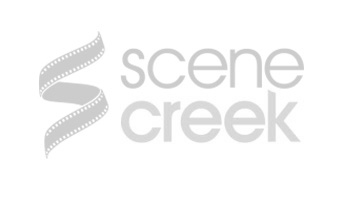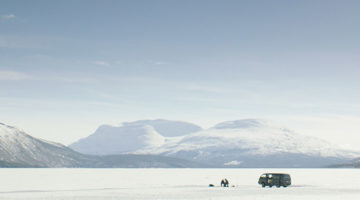5 Questions with Jesse Wente, Director of Film Programmes at TIFF Bell Lightbox
The Mask (Eyes of Hell), a seemingly forgotten Canadian 3D horror film, will be opening at the TIFF Bell Lightbox this Friday at 9 p.m. To make the occasion, we spoke by phone, to Jesse Wente, teh Director of Film Programmes at the Lightbox. Wente was also very involved in the process of restoring the film, and bringing it to the recent festival, and releasing it at the Lightbox in time for Halloween. Wente explained some of the technical process that went into restoring the film, noting that “All of this allowed us to put together what you saw, which is the most complete version of the film, that I think you could have, and it has been restored as you saw, to its original stunning glory”. What is perhaps most surprising is The Mask will certainly inspire some discussion about the critical subtext of the film.
Scene Creek: What was the difficulty when restoring The Mask?
The film has gone through many different versions. It has been renamed, re-cut, and all of that has been tricky just in terms of trying to determine which version you want to rebuild and also in trying to find all of the missing pieces. So ultimately, any time you enter a preservation process like this, the whole, certainly from TIFF’s point of view, is you want to end up with the closest and best version of what the artist had intended.
Scene Creek: Were you looking at releasing the film for TIFF 2015?
You’re dealing with a film that is now almost fifty-five years old at this point, and that was going to be a challenge. When we started, I don’t think we looked at TIFF 2015 as a goal. When we started, I think that we were both naïve in a good way and a bad way. We were naïve in that, oh, we’ve done this sort of thing before, it will be fine, which was naïve because it so much more difficult that it was a 3D picture, but that was also a benefit to the project. We were not daunted by what would follow. That became the goal about one year out. If everything works out great, we could get this for 2015. It was the fortieth anniversary of the festival this year, I think that we wanted to do…it felt like a great platform to be able to do this. This is a preservation project that emerged from the TIFF collection. It sends an important message about the preservation of celluloid and these materials and artworks is a pressing issue globally. It sends an important message about what TIFF does and is going to do.
Scene Creek: What was the original intent of The Mask?
The Mask was an entirely commercial operation. It was meant to make money. It was the tail end of the original Golden Age of 3D in Hollywood. In the 1950’s they were concerned about the growing influence of television, and they wanted to make the 3D experience exclusive to film. So it was something that you had to do in a movie theatre, but it also made it more spectacular. This is pretty much the same reason that we saw 3D get reintroduced at such a large commercial level, from an artistic standpoint, I don’t know if 3D always works. But what was been fascinating about the recent 3D trend, is that real artists, people like Gaspar Noé, people like Wim Wenders, people like Werner Herzog, when they’ve gotten their hands on 3D, then it’s something entirely different, even in the Golden Age, when someone like Hitchcock got his hands on 3D with something like Dial M for Murder, there’s a distinct difference. When it’s used to express something thematically, I think that there’s a lot to be said for 3D. The Mask is not devoid of artistic merit or intent, especially when it comes to those 3D sequences. Ultimately, it’s the person using the tools that matters, CinemaScope is one thing, Stanley Kubrick in CinemaScope is another thing.
Scene Creek: Could you tell us what else is happening in the next little while at the TIFF Bell Lightbox?
This week, we’re opening the Maurice Pialat retrospective, which is a always an excellent opportunity to revisit this somewhat lesser-known French film-maker, who is a true master and a genius artist. His widow Sylvie will be here to present both his films and her work. She’s quite an extraordinary artist in her own right, when it comes to movies. To me, to get to see retrospectives like this, like Pialat, is sort of why the Lightbox exists. Pialat and Warhol are important because while TIFF is celebrating its fortieth anniversary, the Cinematheque is celebrating its twenty-fifth anniversary this year.
Scene Creek: Is that so?
We came off a huge program with A Summer in Italy which showed off the TIFF Cinematheque’s capability, but Pialat and Warhol do too. When James Quandt started the Cinematheque at TIFF, it’s really what it’s about, showcasing the greatest auteurs that cinema has to offer, and I think that in both Pialat and Warhol, you have both very different, very divergent examples of artists working in cinema, but really doing what the Lightbox was meant to do, which was to bring together things like Pialat, things like Warhol, things like The Mask together, because the Lightbox is a celebration of movies and our love of movies, and TIFF is an ongoing engagement with the history, including the Canadian history, of cinema.
The Mask (Eyes of Hell) opens this Friday at the TIFF Bell Lightbox. André Loiselle and Gina Freitag will be on hand to introduce The Mask (Eyes of Hell) on Saturday, October 24 at 9 p.m. Love Exists: The Films of Maurice Pialat opens October 22nd and runs to December 5th, with Sylvie Pialat attending many of the screenings. Andy Warhol: Stars of the Silver Screen featuring screenings and an exhibition, will run from October 30th to January 24th. For more information, go to http://www.tiff.net/




